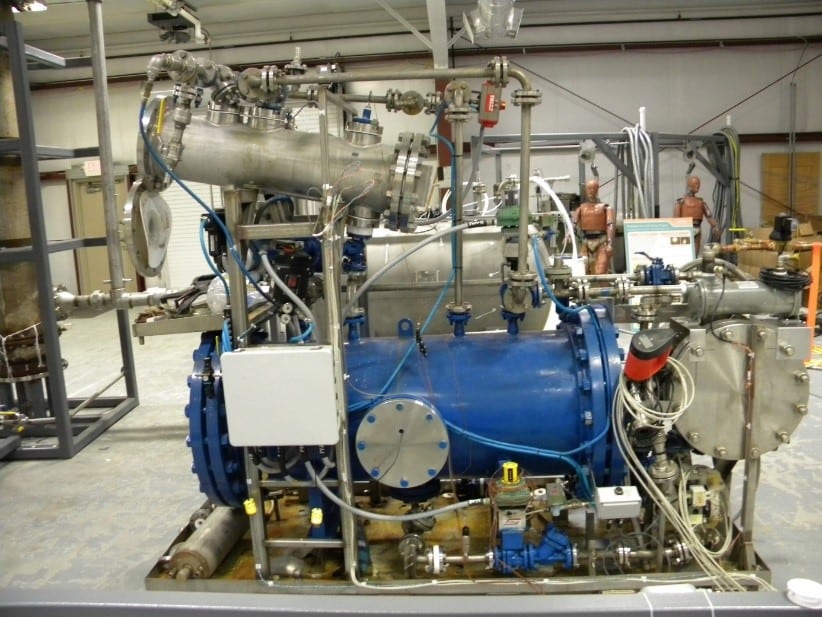Demand for Rare Earths Sparks Research for Recovery from Coal
Global demand for the 17 periodic table elements-15 within the chemical group called lanthanides, plus yttrium and scandium-has soared in recent years as they become increasingly integrated in new technologies.
Some major end uses include generators for wind turbines, permanent magnets and rechargeable batteries for hybrid and electric vehicles, automotive catalytic converters, fluid cracking catalysts in petroleum refining, and phosphors in color television and flat panel displays, including in cell phones and laptops.
REEs aren't exactly "rare": Some are moderately abundant in the earth's crust, even more than copper and lead. But they are not distributed evenly, most often occurring in low concentrations in a variety of minerals and coal, making them difficult to extract and separate economically. The U.S., which was once the world's leader in REE production (from the 1960s to the 1980s) and capable of fulfilling all its domestic REE needs, has become almost entirely reliant on imports. About 87% come from China, owing to lower costs. However, this has raised alarm from the Department of Defense, which particularly relies on two REEs, yttrium and dysprosium, for critical applications.
That's one reason NETL is conducting a program to pinpoint areas where REEs are located in concentrations of greater than 300 parts per million by characterizing coal and coal byproducts from different geological regions across the U.S. via field samples and chemical analyses. The agency's program also seeks to demonstrate the techno-economic feasibility of domestic REE separation technologies by 2025.
For NETL, the approach is sound: The U.S. burns almost a billion tons of coal a year, producing 100 million to 150 million tons of coal ash with a concentration of between 47,000 to 70,500 tons of REEs. That's two to four times U.S. consumption today, it says. "The possible recovery of rare earth elements from abundant coal and byproducts is an exciting new research area, representing a dramatic paradigm shift for coal," it says. "Additional data is needed on the rare earth contents of coals and byproducts in order to determine the most promising potential feed materials for extraction processes."
NETL is backing a number of promising pilot-scale facilities to promote the high-yield and economical production of REEs. One project being supported with federal funding is led by Massachusetts-based Physical Sciences Inc. That initiative seeks to optimize the enrichment and recovery process stages and build and demonstrate the REE extraction process from coal ash at a pilot-scale plant. If the "economically benign" project advances, the pilot-stage circuit is designed to process a dry ash throughput of one to five tons per day of rare earth mineral concentrates with purity levels of at least 2% REEs by weight. The project's goal is to produce dry mixtures of nitrates with REE concentrations above a weight of 5%, preferably greater than 10%.
The Southern Research Institute and project partner ArcSec has meanwhile developed an alternating-current graphite-electrode plasma-arc technology for coal fly ash vitrification that will be used to concentrate rare earth elements. Phase 1 in that project will include sampling and characterization of coal fly ash from eight coal"fired power plants that utilize eastern bituminous coal (particularly eastern Kentucky coal) for REE content. The team will conduct bench"scale experiments utilizing a plasma furnace to evaluate the fate of REEs in the separation between the top slag layer and the bottom molten metal layer. In another project, Colorado-based Tusaar Corp. is using a proprietary metal sequestration technology, leaching processes, and metal sorption media to develop a bench-scale REE extraction process. It claims that current technology "gives a digestion of fly ash that recovers 10% to 50% of the REEs," and that the media could allow for a recovery of more than 80% of REEs. The technology also allows for extraction of uranium and thorium from fly ash.
At the same time, the University of Kentucky Research Foundation is leveraging $1.3 million to advance an innovative separation technology that uses a froth flotation process and novel hydrophoic-hydrophilic separation process to first recover coal from ultrafine coal refuse, and then treat a reject stream-mostly clay minerals and fine clay rocks-with ammonium sulfate to recover rare earth ions. And in yet another project, Battelle Memorial Institute is applying its patented closed-loop acid digestion process (Figure 7) to sample and characterize potential REE feedstocks from power plant coal ash, low-temperature combustion ash, and residual ash from the institute's coal liquefaction process. The technology has the potential to concentrate REEs in coal ash to a product of greater than 2% REEs by mass, while recovering greater than 90% of nitric acid used and improving the pozzolanic activity of the ash byproduct.
 Closed-loop leaching. The Battelle Memorial Institute, based in Columbus, Ohio, is validating the economic viability of a patented process that uses closed-loop acid digestion to recover rare earth elements from coal ash. This image shows Battelle's acid digestion process reactor with its acid recirculation tank. Source: NETL
Closed-loop leaching. The Battelle Memorial Institute, based in Columbus, Ohio, is validating the economic viability of a patented process that uses closed-loop acid digestion to recover rare earth elements from coal ash. This image shows Battelle's acid digestion process reactor with its acid recirculation tank. Source: NETLProjects are also underway to develop technologies to extract and concentrate REEs from coal fly ash and other coal combustion residuals by Duke University; the University of North Dakota, which will focus on North Dakota lignite; and the University of Wyoming, which will center research on REE recovery from Powder River Basin coal ashes.
-Sonal Patel, associate editor (@POWERmagazine, @sonalcpatel)
The post Demand for Rare Earths Sparks Research for Recovery from Coal appeared first on POWER Magazine.